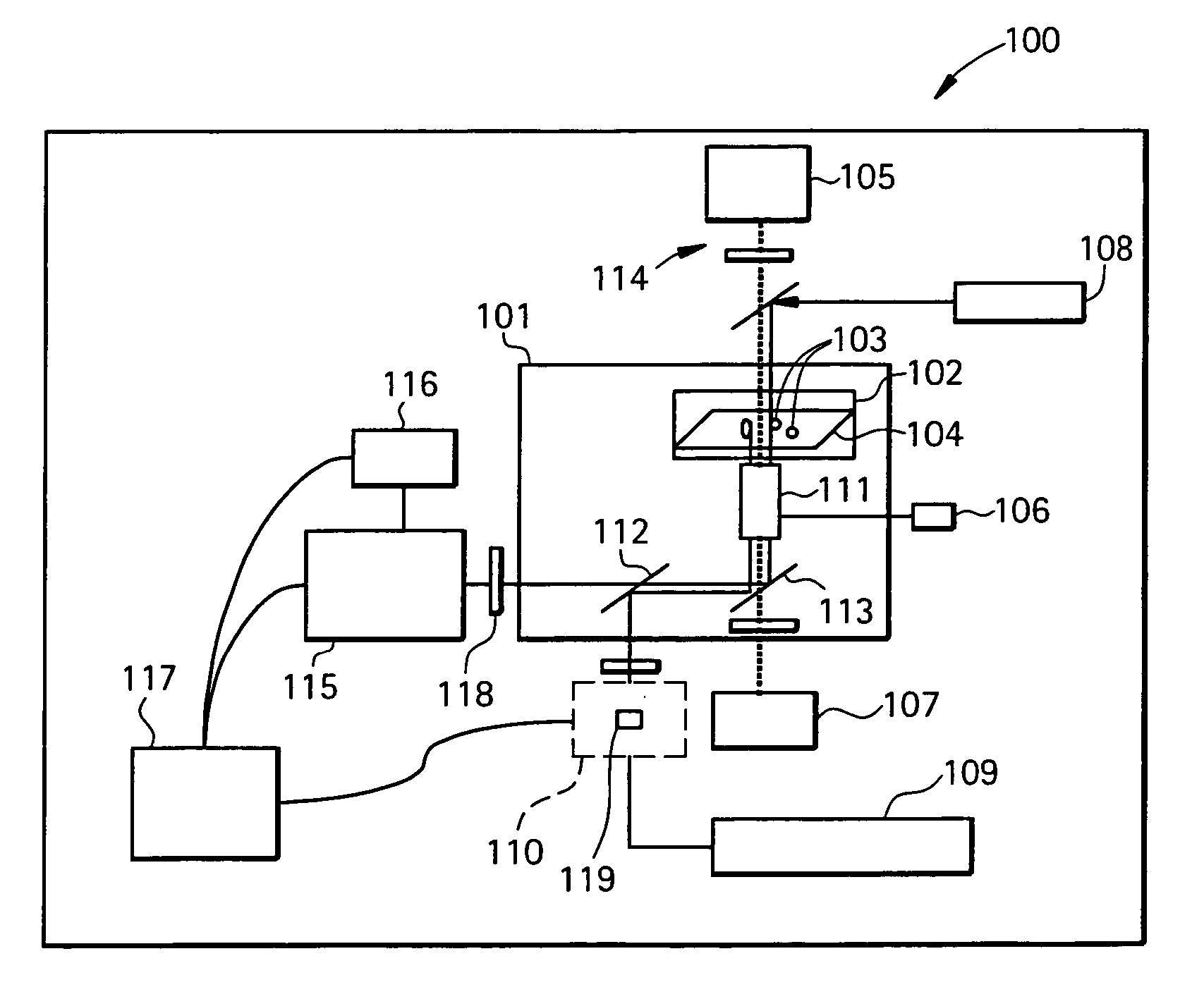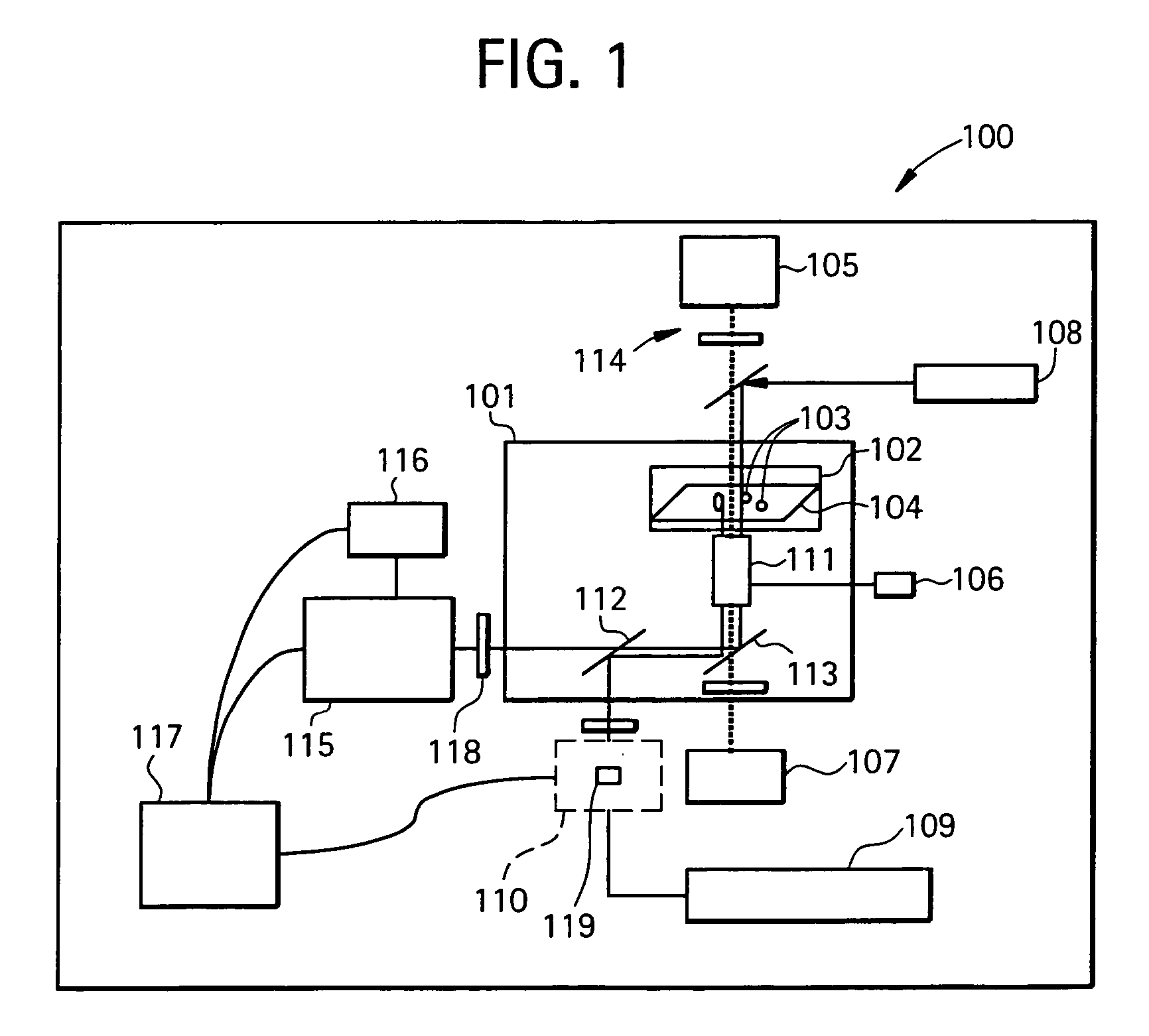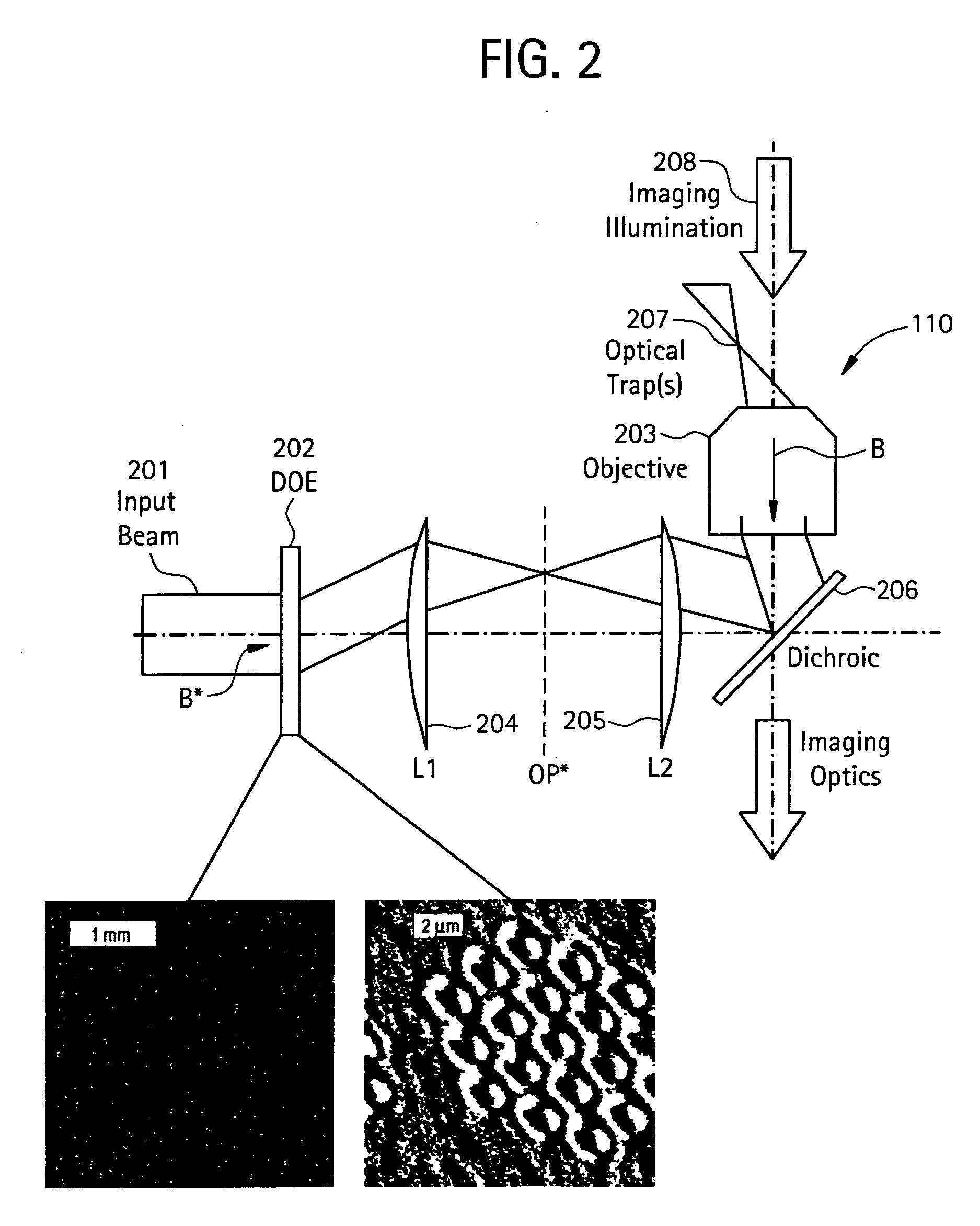Apparatus and method for detecting deformability of cells using spatially modulated optical force microscopy
a spatial modulation and optical force technology, applied in the field of apparatus and method for detecting deformation of cells using spatial modulated optical force microscopy, can solve the problems of limited success, limitation of optical stretcher technique, and the inability to measure suspended cells
- Summary
- Abstract
- Description
- Claims
- Application Information
AI Technical Summary
Benefits of technology
Problems solved by technology
Method used
Image
Examples
Embodiment Construction
[0024] The present invention is related to an optical force measurement device that can apply optically based forces and sensitively detect the resulting deformations in objects, such as cells, while the objects rest on or adhere to a surface, rather than being in suspension as in previous applications.
[0025] In particular, in one embodiment, the present invention measures deformations in the object as a function of an applied optical force, using holographic optical trapping technology, for example, to direct optical forces to potentially many regions of interest simultaneously.
[0026] In another embodiment, the present invention measures deformations in the object using a quantitative phase contrast microscopy technique—e.g. spatially modulated optical force microscopy (SMOFM).
[0027] In a preferred embodiment, the present invention utilizes spatially modulated optical force microscopy (SMOFM) with single beam optical force probing capability or with a holographic optical trappin...
PUM
| Property | Measurement | Unit |
|---|---|---|
| refractive index n2 | aaaaa | aaaaa |
| refractive index n2 | aaaaa | aaaaa |
| center wavelength | aaaaa | aaaaa |
Abstract
Description
Claims
Application Information
 Login to View More
Login to View More - R&D
- Intellectual Property
- Life Sciences
- Materials
- Tech Scout
- Unparalleled Data Quality
- Higher Quality Content
- 60% Fewer Hallucinations
Browse by: Latest US Patents, China's latest patents, Technical Efficacy Thesaurus, Application Domain, Technology Topic, Popular Technical Reports.
© 2025 PatSnap. All rights reserved.Legal|Privacy policy|Modern Slavery Act Transparency Statement|Sitemap|About US| Contact US: help@patsnap.com



